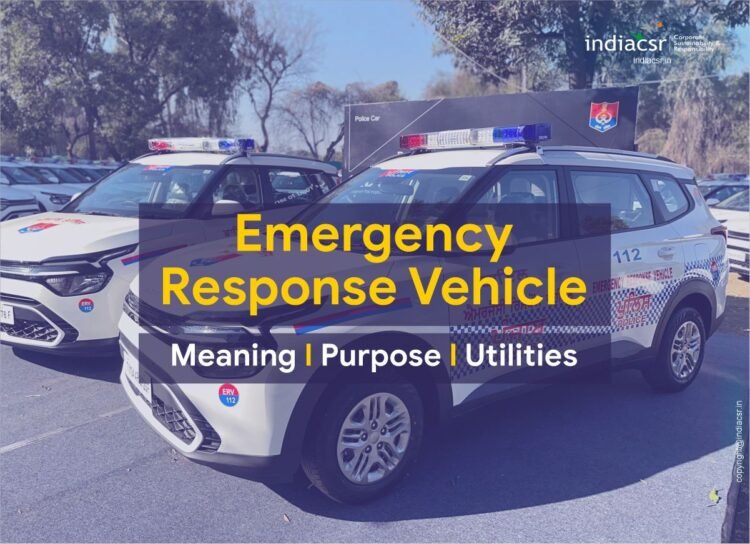The piercing wail of a siren, the flashing red and blue lights cutting through the darkness – these instantly recognizable cues signify the arrival of an emergency response vehicles (ERVs). But have you ever stopped to consider the fascinating journey these crucial machines have taken, or the multitude of purposes they serve? Buckle up, as we delve into the meaning, evolution, purpose, and diverse uses of ERVs.
Emergency response vehicles (ERVs) are the backbone of any effective emergency service system, providing swift, reliable assistance in times of crisis. From fire trucks and ambulances to police cars and specialized disaster response units, these vehicles have undergone significant evolution to meet the growing demands of public safety and emergency management. This article delves into the transformative journey of ERVs, highlighting key advancements and their impact on emergency services.
Meaning and Historical Roots
An ERV, by definition, is any vehicle specifically designed and equipped to respond to emergencies. However, their history stretches back further than you might think. Before sirens and flashing lights, horse-drawn ambulances carried the sick and injured. The first motorized ambulances weren’t much faster, often modified cars lacking specialized equipment. In fact, the evolution of ERVs is closely linked to technological advancements.
***
The Dawn of Emergency Response
The history of ERVs traces back to the horse-drawn wagons used by fire brigades in the 18th century. These early incarnations, though primitive by today’s standards, laid the groundwork for the development of motorized emergency vehicles in the early 20th century. The introduction of motorized ambulances and fire engines marked a significant leap forward, drastically reducing response times and improving the efficiency of emergency operations.
***
From Basic to Specialized
Early ERVs primarily served for transportation. Today, they’re marvels of technology, categorized into distinct types serving specialized roles:
- Fire Trucks: Battling blazes with ladders, hoses, and specialized equipment.
- Ambulances: Providing emergency medical care and transporting patients to hospitals.
- Police Cars: Patrolling for criminal activity, responding to emergencies, and transporting detainees.
- Rescue Vehicles: Equipped for specific situations like mountain rescues, hazardous material spills, or water disasters.
- Command Vehicles: Mobile hubs for coordinating large-scale emergency responses.
***
Technological Advancements
Over the years, technological innovations have played a pivotal role in the evolution of ERVs. Modern emergency vehicles are equipped with state-of-the-art communication systems, navigation tools, and medical equipment. For instance, ambulances now feature advanced life-support systems, allowing paramedics to administer critical care en route to the hospital. Similarly, fire engines are equipped with high-pressure hoses, aerial ladders, and thermal imaging cameras to enhance firefighting capabilities.
***
Beyond Land
ERVs aren’t limited to roads. Helicopters and planes provide air medical transport, while boats and jet skis navigate waterways for rescues. Even drones are increasingly used for search and rescue operations, traffic monitoring, and delivering medical supplies.
***
The Enduring Purpose
Despite their diverse forms, ERVs share a universal purpose: saving lives and minimizing harm. They enable first responders to reach emergencies quickly, provide essential aid, and transport those in need to safety. The constant development of ERVs reflects our relentless pursuit of improving emergency response efficiency and effectiveness.
***
Specialization and Diversification
As emergency services have expanded their scope, ERVs have become more specialized to address specific types of emergencies. Hazardous materials units, search and rescue vehicles, and mobile command centers are just a few examples of this diversification. These specialized vehicles are designed with unique features and equipment tailored to their specific mission, whether it be handling chemical spills, conducting search and rescue operations in challenging terrains, or coordinating large-scale emergency responses.
***
Design and Sustainability
The design of ERVs has also evolved with a focus on safety, efficiency, and sustainability. Ergonomic designs ensure that emergency responders can move quickly and safely, reducing the risk of injury and fatigue. Additionally, there is a growing emphasis on eco-friendly emergency vehicles. Electric and hybrid models are being introduced, aiming to reduce carbon emissions and fuel consumption without compromising performance.
***
The Impact on Emergency Services
The advancements in emergency response vehicles have had a profound impact on the effectiveness of emergency services. Faster response times, improved on-scene capabilities, and enhanced safety for both responders and the public are among the most significant benefits. The ability to provide advanced medical care on the move has improved survival rates in critical emergencies, while specialized vehicles have enabled a more effective response to a wider range of incidents.
***
Looking to the Future
The future of ERVs holds promise for even greater advancements. Autonomous driving technology, drone integration for aerial surveillance and support, and further advancements in medical technology are just a few areas where progress is expected. These innovations will continue to enhance the capabilities of emergency services, ensuring that they can meet the challenges of tomorrow with even greater efficiency and effectiveness.
Looking ahead, ERVs are likely to become even more sophisticated. Autonomous vehicles, advanced medical technology integration, and further drone applications are just a glimpse into the future. These advancements promise faster response times, improved medical care, and enhanced situational awareness for first responders.
***
Beyond the Siren
Next time you hear the wail of an ERV, remember, it’s more than just a vehicle. It’s a symbol of hope, a testament to human ingenuity, and a vital part of the safety net that keeps our communities safe. So, the next time you see one, give it the right of way and offer a silent thank you to the brave individuals who rely on these machines to serve and protect.
In conclusion, the evolution of emergency response vehicles reflects the ongoing commitment to improving public safety and emergency response. Through technological innovation, specialization, and a focus on sustainability, ERVs have become a critical asset in the rapid and effective response to emergencies. As we look ahead, it is clear that these vehicles will continue to play a vital role in shaping the future of emergency services.
(India CSR)
Also Read




















